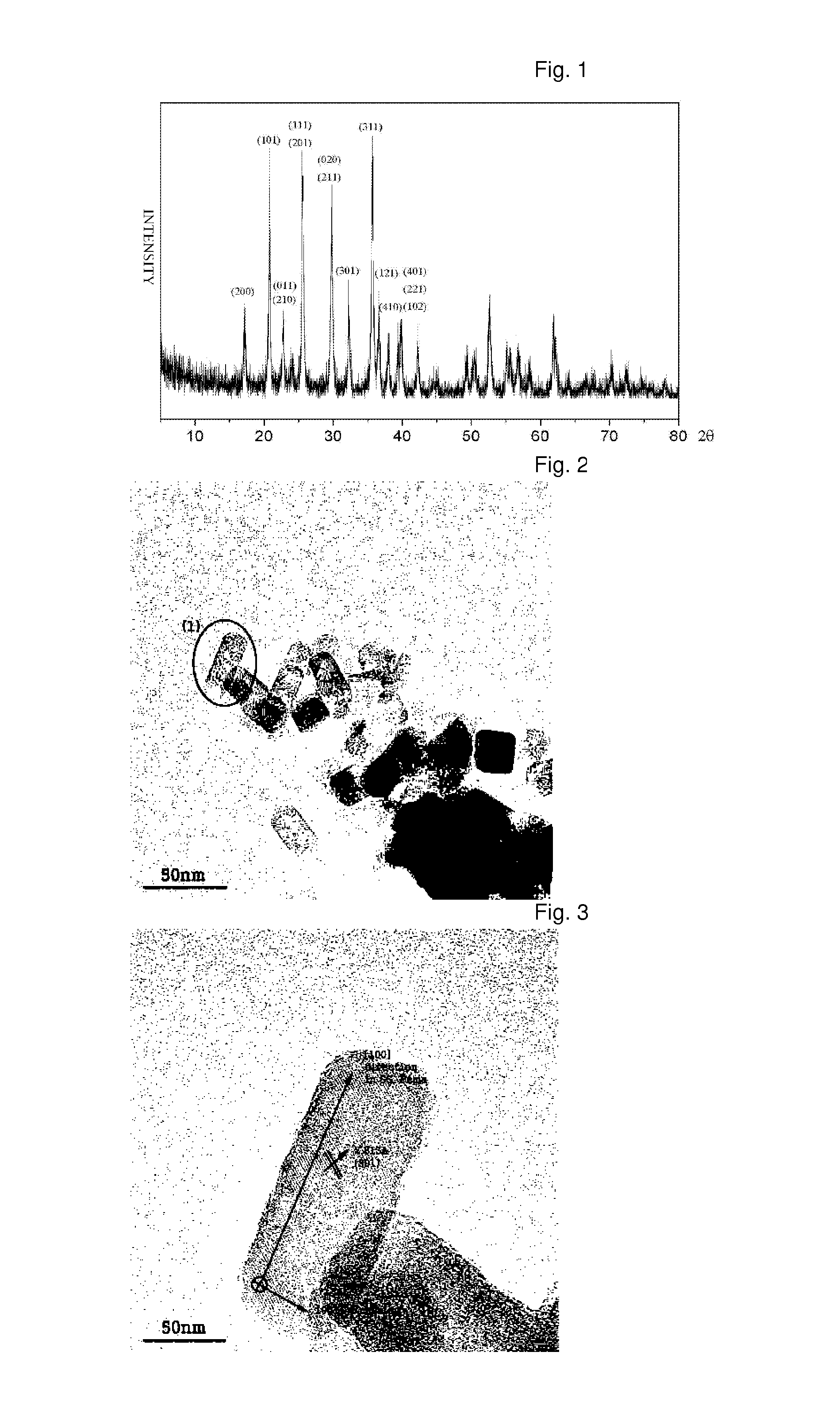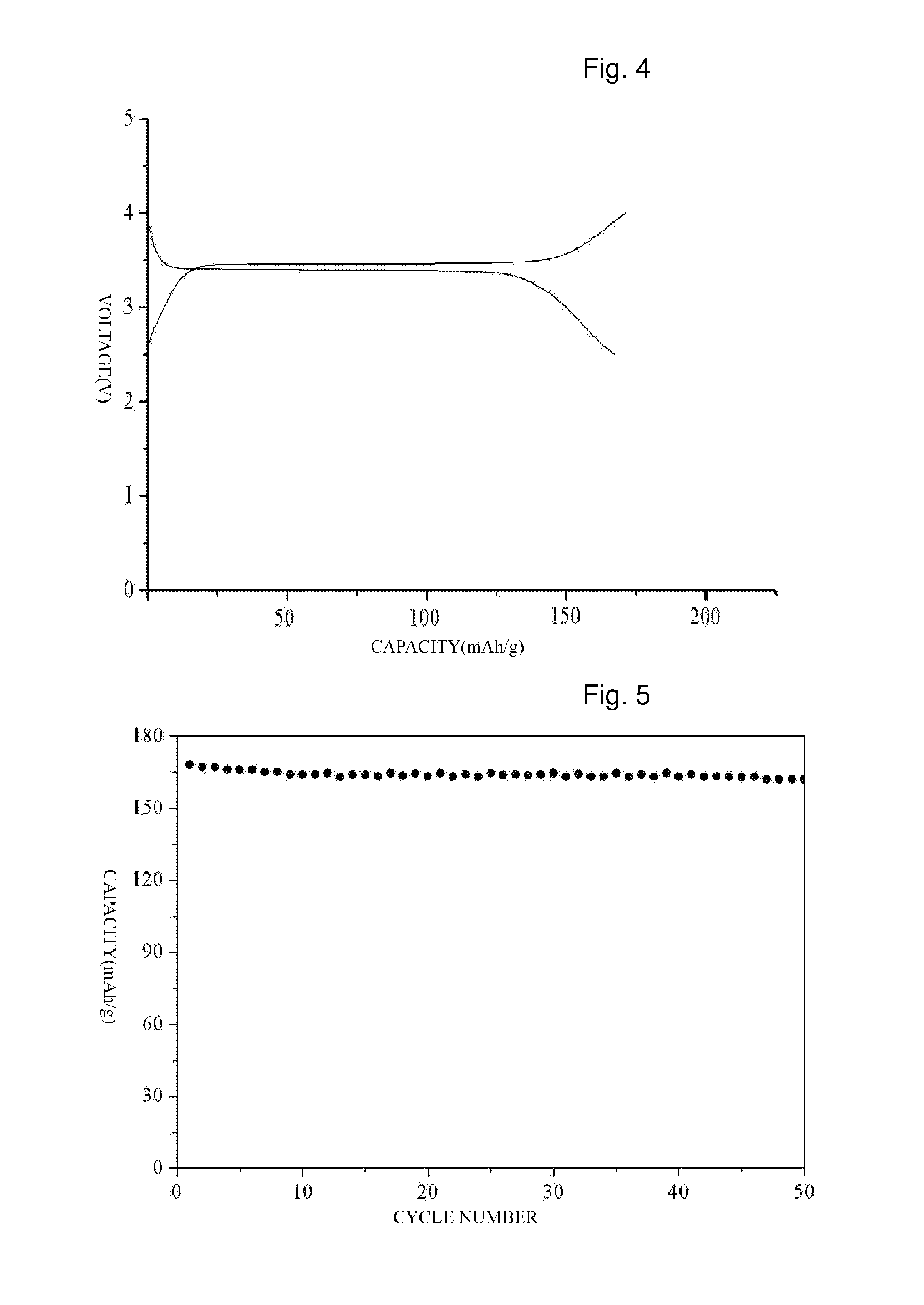Method for synthesizing electrode material using polyol process
a polyol and electrode material technology, applied in the direction of alkali metal oxides/hydroxides, cell components, alkali metal sulfites/sulfates, etc., can solve the problems of low electrical conductivity, high manufacturing cost of electrode materials, and decrease in thermal stability, so as to reduce environmental pollution generated during the process of synthesizing electrode materials , the process of synthesizing electrode materials is simplified
- Summary
- Abstract
- Description
- Claims
- Application Information
AI Technical Summary
Benefits of technology
Problems solved by technology
Method used
Image
Examples
example 1
[0042]A mixed solution is prepared by adding Fe(CH3COO)2, which is a transition metal compound, NH4H2PO4, which is a phosphoric acid ionic compound, and CH3COOLi, which is a lithium compound, to a TTEG (Tetraethylene Glycol) solvent. Here, the added Fe(CH3COO)2, NH4H2PO4 and CH3COOLi are mixed such that the molar ratio thereof is 1:1:1. A resultant product (LiFePO4, olivine structure), which is an electrode material, is obtained by reacting the mixed solution in a round flask of a reflux apparatus to the boiling point (335° C.) of the TTEG solvent for 16 hours. Since the polyol solvent creates a reducing atmosphere at the boiling point thereof, the polyol solvent maintains the oxidation number of Fe to be +2 valent. The mixed solution is cleaned several times after the reaction using acetone, so as to remove organic compounds, formed during the reaction, and any remaining TTEG solvent. Then, the resultant product is filtered from the mixed solution using a ceramic filter. Subsequent...
PUM
| Property | Measurement | Unit |
|---|---|---|
| time period | aaaaa | aaaaa |
| temperature | aaaaa | aaaaa |
| diameter | aaaaa | aaaaa |
Abstract
Description
Claims
Application Information
 Login to View More
Login to View More - R&D
- Intellectual Property
- Life Sciences
- Materials
- Tech Scout
- Unparalleled Data Quality
- Higher Quality Content
- 60% Fewer Hallucinations
Browse by: Latest US Patents, China's latest patents, Technical Efficacy Thesaurus, Application Domain, Technology Topic, Popular Technical Reports.
© 2025 PatSnap. All rights reserved.Legal|Privacy policy|Modern Slavery Act Transparency Statement|Sitemap|About US| Contact US: help@patsnap.com



